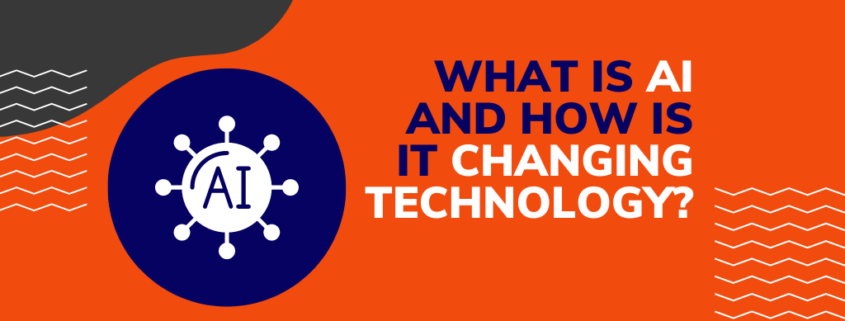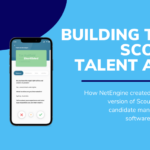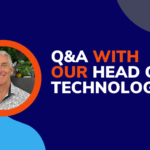Recently, the NetEngine team has been working on developing AI for one of our work tech clients, Scout Talent. The goal was to support Scout Talent’s business needs as a talent acquisition platform in a phased process – with the first phase being using AI to automate content generation.
Leading this project is frontend developer, Phil Cantrel, who shares his thoughts below on AI: what it is, what about it sparked his interest, and how it is transforming technology.
What is AI and how is it changing technology?
AI (Artificial Intelligence) is a rapidly developing field that encompasses a range of technologies that allow machines to learn and act without explicit programming. These fields include machine learning, natural language processing and computer vision. Instead of programmers needing a deep understanding of a problem and its underlying patterns, they can now ‘train’ neural networks, which are based loosely on the structure of the human brain.
The training process typically involves feeding large amounts of relevant data to the neural network, with modifications being made to its parameters via techniques such as supervised, unsupervised and reinforcement learning to optimise its output.
This new way of approaching computing has allowed for massive improvements in technologies that process and generate written content, contextualise and understand images and video, transcribe and synthesise human speech, write computer code and even generate original artwork.
According to the Harvard Business Review (Davenport and Ronanki, 2018, p. 110), AI can be categorised into three broad types, each of which supports one of these business needs: automating business processes, gaining insight through data analysis, and engaging with customers and employees. NetEngine’s initial phase of work with Scout Talent falls into process automation, allowing for automated content generation (such as job descriptions) as part of their end-to-end talent acquisition process.
What drove my interest in AI?
I’ve always had an interest in computing and the possibilities of disruptive fields in tech. As such, I’ve made a habit of keeping up to date with new ideas and development in the space.
My interest specifically in the field of AI was sparked in 2010 with Google’s driverless car endeavours, which used computer vision to enable the cars to navigate in real world spaces. After that, it was the development of AI systems that could beat human players in games like Go and DOTA2, along with more recent advancements in text and image generation, that prompted me to explore how I could use the technology in my work at NetEngine.
I got support from my team leaders to pursue research into AI, which culminated in my using the learnings from my personal development time to integrate GPT-3 into one of Scout Talent’s existing products to demonstrate its ability to automate content generation.
Who’s making big moves in AI?
Google, Amazon, Facebook, IBM, Microsoft, Tesla and Apple have all made significant investments in AI research and development to improve their products and services. For example, Google has been implementing AI over several years to provide better search results, create their Google Assistant, improve the accuracy of their language translation services, organise and tag images in Google Photos, and develop driverless cars (Waymo) – just to name a few.
There has been a recent emergence of new competitors in the field, the biggest of which is OpenAI, a company built with the sole purpose of developing useful AI models. Their DALLE-2 model has allowed users to generate original images and artwork based on text prompts while their GPT-3 language model has been used to create the very popular ChatGPT website which allows users to ask an AI chatbot to perform a variety of tasks, from answering questions to creating blog posts and much more with impressive results.
Microsoft are now considering a $10 billion investment in OpenAI, which is in addition to their current strong partnership. At present, Microsoft provides its Azure cloud infrastructure for the training and deployment of OpenAI’s models and has exclusive licence to some of OpenAI’s technology.
How can I get in on the action?
As researching, training and developing AI models requires significant capital investment, as well as experts in the machine learning field, smaller companies and startups are often unable to make their own proprietary AI models.
Many of these smaller companies have instead turned to established AI providers such as OpenAI and Google, leveraging their existing pre-trained AI models and cloud infrastructure, available via easy-to-use APIs, to develop new products and integrate AI technology into their software and services. Jasper, a recent AI startup with a $1.5B valuation, specialises in generating blogs, landing pages, video scripts, social media posts, images and more. It primarily uses OpenAI’s GPT-3 and DALL-E 2 products as its underlying technology to provide its services.
There are also alternative ‘open-source’ AI models such as BLOOM (a language model similar to GPT-3) and Stable Diffusion (a text-to-image model) which can be freely downloaded and deployed, removing the necessity to lock into a specific AI vendor and their pricing model.
The future that AI represents is vast and many of its potential applications are yet to be implemented and monetised. As AI evolves and improves, we will see more companies and startups capitalising on the opportunities it presents. Artificial Intelligence is on a path to significantly transform the way we live and work, making it important for companies to stay informed and ready to adapt in order to stay competitive.
Interested in implementing AI to fulfil your work tech business needs? Get in touch with us here.
About the Author





